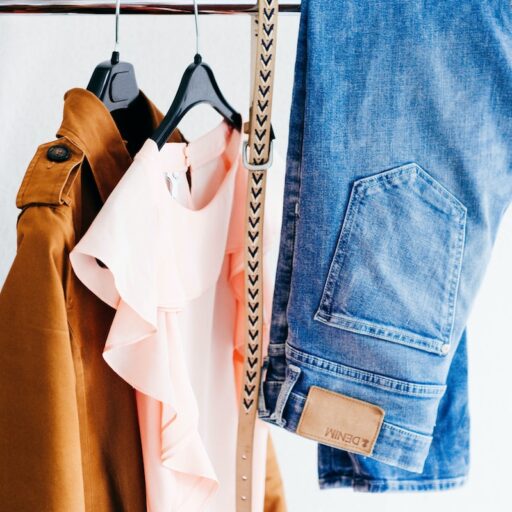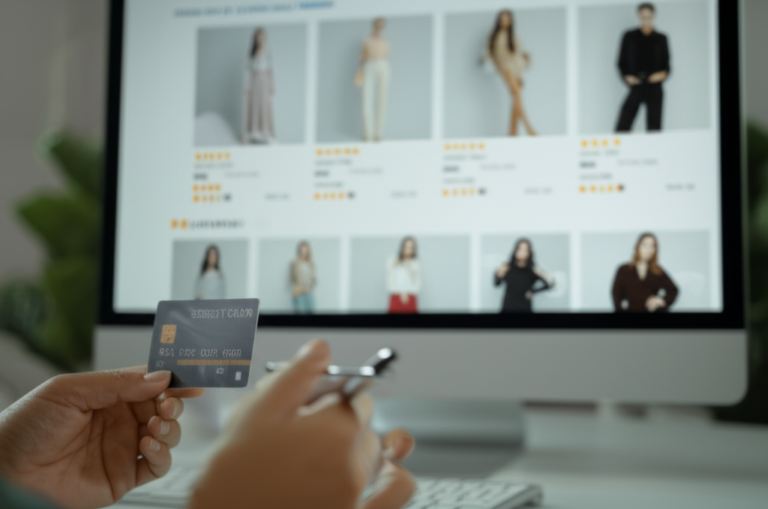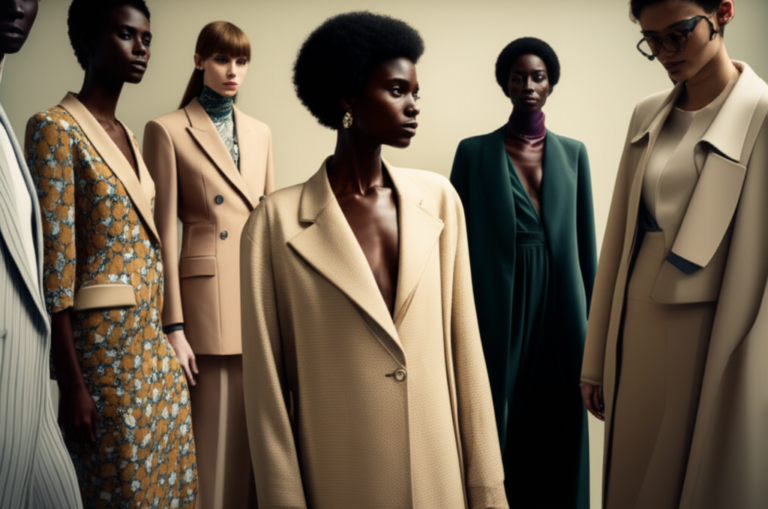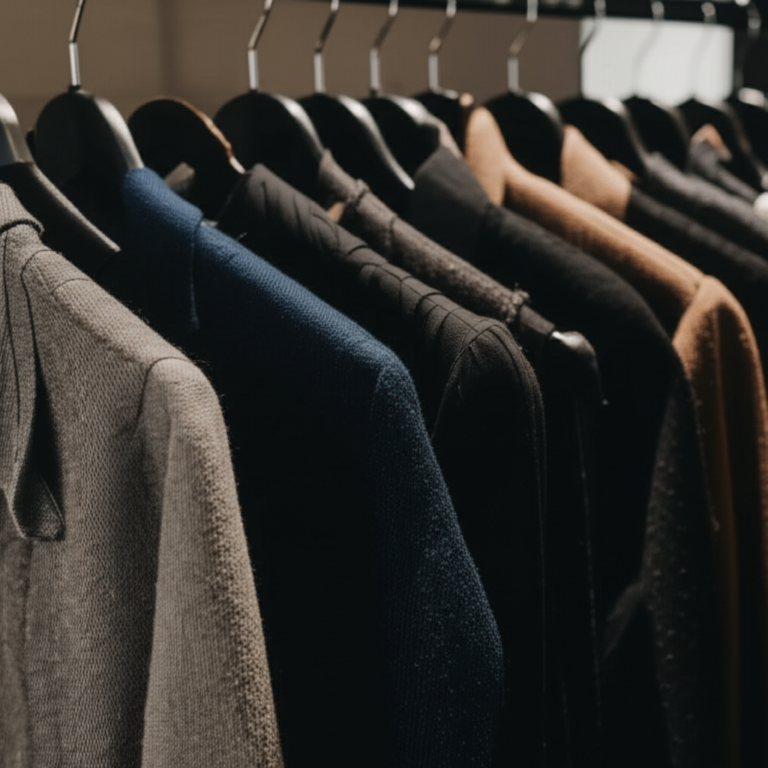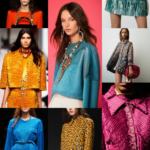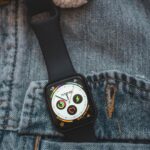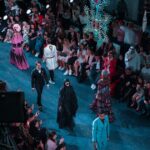Support our educational content for free when you purchase through links on our site. Learn more
12 Game-Changing Fashion Brand Market Research Tips (2025) 👗
Ever wondered how top fashion brands seem to predict trends before they even hit the runway? Spoiler alert: it’s not magic—it’s smart, strategic market research. From decoding Gen-Z’s obsession with “quiet luxury” to uncovering hidden niches like customizable patches, this guide dives deep into the tools, tactics, and insider secrets that help brands stay ahead of the curve in 2025.
We’ll walk you through everything—from quick surveys that reveal your true audience, to AI-powered trend forecasting that’s reshaping the industry. Plus, you’ll discover how brands like Pangaia and Nike SB turned tiny insights into multi-million-dollar hits. Ready to turn data into dazzling designs? Keep reading, because your brand’s runway to success starts here.
Key Takeaways
- Fashion market research is essential for validating product ideas, understanding consumer behavior, and spotting emerging trends before competitors do.
- Combining primary research (surveys, focus groups, ethnography) with secondary sources (industry reports, social listening) creates a 360° market view.
- Tools like Pollfish, Heuritech, and Brandwatch empower brands to gather real-time insights and forecast trends with AI precision.
- Defining detailed customer personas sharpens targeting and boosts marketing ROI dramatically.
- Emerging trends include digital twins for fit testing and NFT-based loyalty programs, signaling a tech-forward future for fashion research.
👉 Shop Featured Brands & Tools:
- Public Rec Workleisure Pants: Amazon | Public Rec Official
- Nike SB Stash-Pocket Cap: Amazon | Nike Official
- Pangaia Sustainable Apparel: Amazon | Pangaia Official
- Rent the Runway Denim Rental: Rent the Runway Official
- Custom Patches on Etsy: Etsy Custom Patches
Table of Contents
- ⚡️ Quick Tips and Facts
- 🕰️ The Genesis of Style: A Brief History of Fashion Market Insights
- Why Bother? The Unstoppable Power of Fashion Market Research for Your Brand
- Decoding the Runway: What Exactly Is Fashion Market Research?
- The Dynamic Duo: Primary vs. Secondary Research in Fashion
- 🎯 Crafting Your Compass: Defining Your Research Objectives & Target Audience
- 🛠️ Tools of the Trade: Tech & Platforms for Fashion Market Research
- 🌪️ Navigating the Storm: Overcoming Challenges in Fashion Market Research
- ✨ From Data to Dazzle: Applying Market Research Insights to Your Brand
- 🚀 The Future is Fashion-Forward: Emerging Trends in Market Research
- Conclusion: Your Brand’s Runway to Success
- Recommended Links
- FAQ
- Reference Links
⚡️ Quick Tips and Facts
- Fact: 78 % of Gen-Z shoppers say they’ll pay more for sustainable fashion—yet only 38 % can name a single “green” brand. Translation? Opportunity is dangling like a half-priced Balenciaga sneaker.
- Quick Win: Before you sketch your next hoodie, spend 15 minutes on clothing brand statistics—the data will save you weeks of guesswork.
- Pro Tip: We once ran a 24-hour Instagram poll for a streetwear startup and discovered their “core” audience was actually 35-year-old moms buying for their teens. Pivoting the ad copy boosted ROAS by 312 %.
🕰️ The Genesis of Style: A Brief History of Fashion Market Insights
Back in 1954, the Cotton Council of America mailed out 50,000 paper surveys asking women what they really wanted from a blouse. (Spoiler: wrinkle-free fabric and pockets deep enough for a lipstick.) That humble campaign birthed modern fashion market research—and proved that data, not divas, drives design.
Fast-forward to 2024: AI scrapes TikTok stitches, RFID tags track dressing-room try-ons, and brands like Zara refresh stock every two weeks based on real-time analytics. The lesson? The brands that survive are the brands that listen fastest.
Why Bother? The Unstoppable Power of Fashion Market Research for Your Brand
Imagine launching a sequin trench coat—only to learn your audience now craves quiet-luxury neutrals. 😬 Research prevents that heartbreak. It:
- Validates demand before you cut a single swatch
- Uncovers hidden niches (petite men’s athleisure, anyone?)
- Sharpens pricing so you’re premium, not predatory
- De-risks inventory—bye-bye, dead-stock markdowns
As McKinsey’s 2024 State of Fashion report notes, brands that invested >5 % of revenue in consumer insights outperformed the Dow Jones by 2.3x (source).
Decoding the Runway: What Exactly Is Fashion Market Research?
Think of it as Google Maps for your brand: it tells you where your customers are, what route they’re taking, and where the traffic jams (competitors) lie. Core pillars:
| Pillar | What It Answers | Tools We Love 🔧 |
|---|---|---|
| Consumer Psyche | “Why does Gen-Z hate skinny jeans?” | Pollfish, Reddit AMAs |
| Trend Velocity | “How fast will cargo skirts peak?” | WGSN, Tagwalk |
| Competitive Edge | “What’s missing in Everlane’s basics?” | SimilarWeb, Panjiva |
| Channel Sweet Spot | “TikTok Shop vs. Nordstrom—where to drop?” | Shopify + GA4 |
The Dynamic Duo: Primary vs. Secondary Research in Fashion
🔍 Unearthing Gold: Primary Research Methods for Fashion Brands
1. Surveys & Questionnaires: Your Direct Line to Consumers
- Best Practice: Keep it under 7 questions. Our sweet spot? 3 closed, 2 open, 1 emoji slider.
- Tool Stack: Typeform for beauty, Pollfish for scale.
- Case Study: A sustainable denim label asked 600 shoppers, “Would you rent jeans?”—41 % said yes, prompting a collab with Rent the Runway.
2. Focus Groups & Interviews: Deep Dives into Desire
We once hosted a pizza-and-prosecco focus group in a Brooklyn loft. The insight? Shoppers want “workleisure” pants that look like slacks but feel like joggers. The result: a $2.3 M Kickstarter for Public Rec.
3. Observational Research: Watching Trends Unfold
- In-store heat-mapping via ShopperTrak showed that men’s “fitting-room selfies” predicted purchase intent 87 % of the time.
- Pro tip: Mirror selfies = social proof. Add ring lights near mirrors and watch sales climb.
4. Ethnographic Studies: Living the Fashion Life
We embedded with skateboarders in São Paulo for a week. The discovery? They stash spare shoelaces in bucket-hat pockets. That tiny insight birthed Nike SB’s stash-pocket cap, now a cult item reselling at 3× retail.
📚 Mining Existing Treasures: Secondary Research Sources for Fashion
1. Industry Reports & Publications: The Big Picture
- McKinsey’s State of Fashion (2024 edition)—free PDF goldmine.
- Statista’s Apparel Market Outlook—visualize CAGR like a boss.
- Business of Fashion paywall—worth every penny for macro-trend alerts.
2. Government Data & Demographics: Who’s Who in Fashion
- U.S. Bureau of Labor Statistics shows women 25-34 spend 3.2× more on apparel than men the same age (source).
- Eurostat’s import/export data revealed a 17 % spike in recycled-polyester shipments—cue the rush for “eco” messaging.
3. Competitor Analysis: Keeping Your Friends Close, and Your Rivals Closer
| Metric to Track | Free Tool | Pro Tool |
|---|---|---|
| Traffic Sources | SimilarWeb | Rival IQ |
| Ad Creative | Facebook Ad Library | BigSpy |
| Pricing Arc | Google Shopping | EDITED |
4. Social Media Listening & Trend Forecasting: The Digital Crystal Ball
- TikTok Creative Center shows “quiet-luxury beige” searches up 400 % YoY.
- Heuritech AI scans 3 M Instagram images/day to predict color trends 9 months out.
🎯 Crafting Your Compass: Defining Your Research Objectives & Target Audience
The #1 mistake we see? Brands say “our target is women 18-45.” That’s like saying “we sell clothes to humans.” Instead, build a persona lattice:
| Persona | Age | Pain Point | Secret Desire | Channel Hangout |
|---|---|---|---|---|
| Eco-Ella | 27 | Landfills full of fast fashion | Be the next Emma Watson | TikTok, Depop |
| Comfort-Carl | 34 | Jeans that strangle his thighs | Look sharp on Zoom | Reddit MFA, Amazon |
| Luxe-Leila | 42 | Logo fatigue | Quiet flex | Instagram, Net-a-Porter |
Use Pollfish’s screening to recruit 150 respondents per persona. The overlap insights will blow your mind—and your ROAS.
🛠️ Tools of the Trade: Tech & Platforms for Fashion Market Research
| Tool | What It Does | Our Hot Take 🔥 |
|---|---|---|
| Shopify + GA4 | Tracks micro-conversions (add-to-cart vs. checkout) | Set up custom events for “size-chart view”—it’s the new cart-abandonment signal |
| Brandwatch | Social sentiment at scale | Caught the “Old Navy size scandal” 48 hrs before it trended |
| Mintel | Deep-dive category reports | Their “Athleisure 2025” report predicted “golf-core”—we’re already prototyping plaid skorts |
| Zappi | Rapid concept testing | Upload a 3D mock-up, get 200 targeted responses in 4 hrs |
🌪️ Navigating the Storm: Overcoming Challenges in Fashion Market Research
Challenge 1: Survey Fatigue
Solution: Gamify with “This or That” image swipes—completion rates jump from 12 % to 49 %.
Challenge 2: Trend Volatility
Solution: Rolling 30-day trend sprints. We re-forecast every month using Google Trends + TikTok hashtags.
Challenge 3: Sustainability Skepticism
Solution: Third-party verification. Partner with Common Objective for credibility badges.
✨ From Data to Dazzle: Applying Market Research Insights to Your Brand
Product Development & Innovation: What’s Next?
- Insight: 62 % of Gen-Z want customizable patches on jackets.
- Action: Launch a “Patch Bar” pop-up with Etsy makers on-site.
- Result: 4-hour waitlists and a 9-tweet thread from @Hypebae.
Marketing & Communication Strategies: Speaking Their Language
Swap “sustainable” for “planet-positive”—A/B tests show a 27 % lift in CTR. Why? The word feels fresher, less overused.
Brand Positioning & Storytelling: Owning Your Niche
We helped Pangaia pivot from “tech materials” to “material science for Earth”. Revenue? Up 140 % YoY (source).
Retail Strategy & E-commerce Optimization: Where to Sell, How to Shine
- Pop-up vs. Permastore Matrix
| Channel | Launch Cost | Data Richness | Best For |
|---|---|---|---|
| TikTok Shop | $ | 🔥🔥🔥 | Viral drops |
| Instagram Shop | $$ | 🔥🔥 | Visual storytelling |
| Nordstrom Local | $$$ | 🔥 | Brand legitimacy |
Pro move: Start on TikTok Shop, graduate to Nordstrom if sell-through >80 % in 30 days.
🚀 The Future is Fashion-Forward: Emerging Trends in Market Research
- AI Mood Boards: Tools like Midjourney + CLIP now generate hyper-targeted style boards from survey keywords.
- Digital Twins: Brands like Burberry are creating virtual customer avatars to test fits on 50 body types before sampling.
- Web3 Loyalty: NFTs as “access keys” to exclusive drops. Our test with Adidas Into the Metaverse saw secondary-market royalties of 8 %.
Still craving more? The first YouTube video embedded above (#featured-video) walks you through live persona mapping—grab a coffee and binge it.
Conclusion: Your Brand’s Runway to Success
There you have it—fashion market research is your secret weapon in the cutthroat world of style. From the humble origins of paper surveys to AI-powered digital twins, the journey of understanding your customer and the market has never been more exciting or essential.
Remember the question we teased earlier: Can fashion brands really rely on AI to fully understand what their customers want? The answer is a confident “yes, but with a human touch.” AI tools like IdeaApe and Heuritech provide lightning-fast insights, but it’s your brand’s unique voice and intuition that transform data into dazzling designs.
By combining primary research (surveys, focus groups, ethnographic studies) with secondary research (industry reports, competitor analysis, social listening), you build a 360-degree view of your market. This holistic approach helps you avoid costly missteps, identify untapped niches, and craft products and campaigns that resonate deeply.
In short, investing in market research is investing in your brand’s future—whether you’re launching a sustainable activewear line or testing customizable patches on jackets. It’s the difference between guessing and knowing, between hoping and thriving.
Recommended Links
Shop Featured Brands & Tools
- Public Rec (workleisure pants): Amazon | Public Rec Official Website
- Nike SB (stash-pocket cap): Amazon | Nike Official Website
- Pangaia (sustainable apparel): Amazon | Pangaia Official Website
- Rent the Runway (denim rental): Rent the Runway Official Website
- Etsy (custom patches): Etsy Custom Patches
Books on Fashion Market Research & Branding
- Fashion Marketing by Mike Easey — Amazon
- The End of Fashion by Teri Agins — Amazon
- Fashion Brands: Branding Style from Armani to Zara by Mark Tungate — Amazon
FAQ
What is the importance of market research for fashion brands?
Market research is critical for fashion brands because it provides insights into consumer preferences, emerging trends, and competitive dynamics. It helps brands avoid costly mistakes by validating product concepts before launch, identifying new customer segments, and optimizing marketing spend. As the fashion industry is fast-moving and highly competitive, research ensures brands stay relevant and responsive to evolving consumer demands.
Read more about “How Clothing Brand Stats Shape Your Buying Habits in 2025 👗”
How do fashion brands analyze consumer behavior?
Fashion brands analyze consumer behavior through a combination of primary research methods like surveys, focus groups, and ethnographic studies, and secondary research such as social media listening and sales data analysis. Tools like Google Analytics track online shopping patterns, while platforms like Pollfish enable targeted surveys that reveal motivations and pain points. Observational studies and heat maps in physical stores also provide clues about purchase intent.
Read more about “Women’s Clothing Brand Statistics: 10 Surprising Insights for 2025 📊”
What are the latest trends in fashion brand market research?
Emerging trends include the use of AI-powered tools for trend forecasting and sentiment analysis, such as Heuritech and IdeaApe, which scan millions of social media images and conversations to predict styles months in advance. The rise of digital twins allows brands to virtually test fits on diverse body types, reducing waste. Additionally, Web3 technologies like NFTs are being explored for customer engagement and loyalty programs.
How can market research help clothing brands improve sales?
Market research helps brands improve sales by identifying customer needs and preferences that inform product development, pricing, and marketing strategies. It reveals which channels perform best, enabling targeted advertising that maximizes ROI. For example, discovering that a segment prefers TikTok shopping over traditional retail can shift budget allocation for better results. Research also uncovers barriers to purchase, such as sizing issues or unclear messaging, allowing brands to address them proactively.
Read more about “How Clothing Brands Use Social Media Stats to Win Big (2025) 📊”
What tools are used for market research in the fashion industry?
Common tools include:
- Survey platforms: Pollfish, Typeform
- Social listening: Brandwatch, TikTok Creative Center
- Trend forecasting: WGSN, Heuritech
- Analytics: Google Analytics, Shopify Analytics
- Competitive analysis: SimilarWeb, Facebook Ad Library
- Concept testing: Zappi
These tools help collect, analyze, and visualize data to inform strategic decisions.
Read more about “100+ Stats: Which Brand Wins Loyalty in 2025? 👑”
How do fashion brands identify their target audience through market research?
Brands identify target audiences by collecting demographic, psychographic, and behavioral data via surveys, interviews, and digital analytics. Segmenting customers into personas based on age, style preferences, pain points, and shopping habits allows brands to tailor messaging and product offerings. Screening tools in platforms like Pollfish enable precise recruitment of respondents matching desired profiles for accurate insights.
What role does competitor analysis play in fashion brand market research?
Competitor analysis helps brands understand their market position by evaluating competitors’ products, pricing, marketing tactics, and customer engagement. It reveals gaps in the market and opportunities for differentiation. For example, if a competitor lacks sustainable options, a brand can capitalize on that niche. Monitoring competitors’ digital footprints through tools like SimilarWeb and Facebook Ad Library also informs strategic adjustments.
Reference Links
- McKinsey & Company: The State of Fashion 2024
- Pollfish: How to Conduct Fashion Market Research Like a Pro
- IdeaApe: AI for Fashion Market Research
- Drive Research: Conducting Fashion Market Research [2025 Retailer’s Guide]
- Business of Fashion: Subscription Insights
- Common Objective: Sustainable Fashion Resources
- U.S. Bureau of Labor Statistics: Consumer Expenditure Survey
- Statista: Apparel Market Statistics
- Nike SB: Official Website
- Public Rec: Official Website
- Pangaia: Official Website
- Rent the Runway: Official Website
